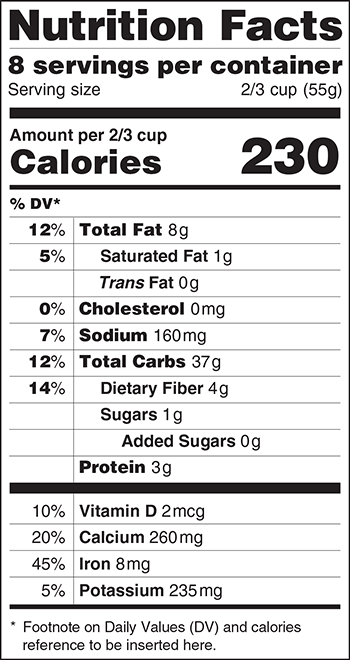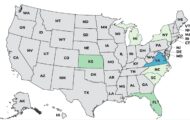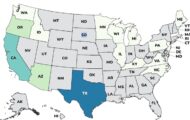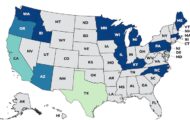The FDA is changing nutrition labels put on all food packages. The box is going to have new design and new content. Michael Landa, director of FDA’s Center for Food Safety and Applied Nutrition said, “Obesity, hearty disease and other chronic diseases are leading public health problems. The proposed new label is intended to bring attention to calories and serving sizes, which are important in addressing these problems. Further, we are now proposing to require the listing of added sugars.”
 One of the changes is larger and bolder type on calories. The number of servings per package is going to be more prominent. Too often, small packages seem like they only contain one serving. Consumers have to look more closely to see how many servings actually deliver the calories on the label. Calories from fat will no longer be listed, since nutritionists say that the type of fat is more important than the total amount. Saturated and trans fat amounts will still be required.
One of the changes is larger and bolder type on calories. The number of servings per package is going to be more prominent. Too often, small packages seem like they only contain one serving. Consumers have to look more closely to see how many servings actually deliver the calories on the label. Calories from fat will no longer be listed, since nutritionists say that the type of fat is more important than the total amount. Saturated and trans fat amounts will still be required.
Serving size requirements may be updated, reflecting “the reality of what people actually eat,” according to food consumption data. Serving sizes must be based on what consumers actually do eat, not what they “should” eat.
Daily values will be updated for certain nutrients, and the amounts of potassium and vitamin D are going to be placed on the label. Dr. Jessica Leighton, senior nutrition science and policy advisory in FDA’s Office of Foods and Veterinary Medicine, said, “we have evidence that people are not consuming enough of these nutrients to protect against chronic diseases.” The daily values will be placed on the left side of the label, where they are more prominent. In addition, the daily values for dietary fiber and sodium will be revised.
The primary goal isn’t to tell people what they should be eating, but to expand and highlight information needed when consumers are making food choices. For instance, people concerned about high blood pressure and strokes, should look at the sodium and potassium amounts on the label.
These changes are illustrated in two proposed rules: one updates the nutrition information and label design; the second for changes to serving size requirements and labeling for package sizes. They are published in the Federal Register for a 90 day comment period. After approval, the food industry will be given two years to comply.





This will be helpful for those of us who do like to read labels. My husband buys jars of dill pickles for himself. The sodium content is given per serving. But, the serving size is 2/3 of a pickle. Most people would eat a whole pickle, so if they didn’t read the serving size, they might not realize they are eating more salt then they thought. This happened with my husband, who has hypertension and needs to limit salt. I suppose it is too much to hope for the ingredient labels to be truthful. I have Celiac and severe food allergies, and there is not much truth in labeling ingredients, to alert people who need to avoid certain foods.